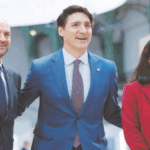I’m back in the classroom, teaching a news media literacy course at a university, and after two classes, I’m feeling optimistic. Since I began teaching journalism and news media courses eight years ago, there have been many changes that I have been pleased to see: More women are enrolling in degrees or classes. They are always smarter (sorry) and more inquisitive, but sadly more reluctant to join the news industry.
There are a few more observations I’d like to share, which I hope will help news media managers and owners with audience insights.
When I last taught this course in the fall of 2023, I glimpsed a post-Imran generation, with a large pocket of students disillusioned with his promises of a new Pakistan. However, this time the sentiments against all politicians, including Imran, are more pronounced. This frustration is not limited to politicians. For example, we looked at an old survey of Pakistanis’ trust in institutions where the military and the Supreme Court were at the top, and the segment said they doubted that would hold true today. The performance of the media then and now has been poor.
“It’s because the media only shows negativity,” said one girl.
Were they ready for the work of change?
To understand how news works, I ask them to create the front page of a newspaper. It’s always their first job. If we in the news media are so bad, how would you do it differently? The goal is simple: Your front page should inform your audience about the news you think is important. Students have to choose five stories for the front page of their paper. They do it individually and then, in the next class, in small groups where they inevitably disagree about which stories to keep. This is a really good introduction to news value and judgment. Later in class, we revisit the exercise but this time with the intention of selling newspapers.
If we in the news media are so bad, how would you do it differently?
This is a fun exercise because we learn that not all editorial decisions are one-size-fits-all. Their answers are always surprising and tell you a lot about what they’re thinking, where they’re coming from, and their — and their family’s — habits. As the years go by, I encounter more students whose families don’t subscribe to newspapers unless their grandparents do. Parents also consume news on mobile devices. Almost everyone’s family still watches the news on TV, but it is no longer the only source of information. TV for breaking news and YouTube for analysis. My students don’t watch the news on TV even though they can see it on their feeds.
Against this background I was hopeful about their front page. Many ran with Imran’s belief as his main storyline, but he explained that he had to because the audience had to be informed. The devastating story of the body of a seven-year-old child found in an underground water tanker in Karachi was run by many students as their top story. This, they argued, was more important than anything else. Stories about violence and economics are also included in his list. Only one student had a story about Balochistan and said he chose it specifically because the province was neglected. An equally important story, by their standards, was PIA’s apology for its ad about resuming flights to Paris.
Each student chose at least one, if not more, stories that show compassion for the vulnerable, including the environment. Almost everyone had the resurgence of Covid in their top three stories. I had forgotten how much the pandemic had affected this group. Finally, they each chose a story that represented hope or something positive to feel good about, as they said. A student was horrified when I said that the death of a motorcyclist on Karachi’s Shaara Faisal was not given importance. He said that my desensitisation was the problem. Sometimes you have to take a stand, said another. His assignments showed that he stood up for the voiceless.
When I pointed out that he was more political than he claimed, more aware of his surroundings than he admitted, I felt a collective nod of approval. It saddens me how politics has been reduced in their minds to the content of our primetime shows, which they don’t even watch.
Of course, this is not representative of the entire race. As I said before, these are the observations of a small urban group, with relatively well-to-do families. They are aware of their privilege and access to power. They know right from wrong but they don’t trust the media to help them. Many people have told me that they signed up for my class because they want to understand how media works and I hope they can teach me how to do it effectively. We need this generation to shape our future.
The author is a journalism teacher.
Published in Dawn, January 26, 2025.












































